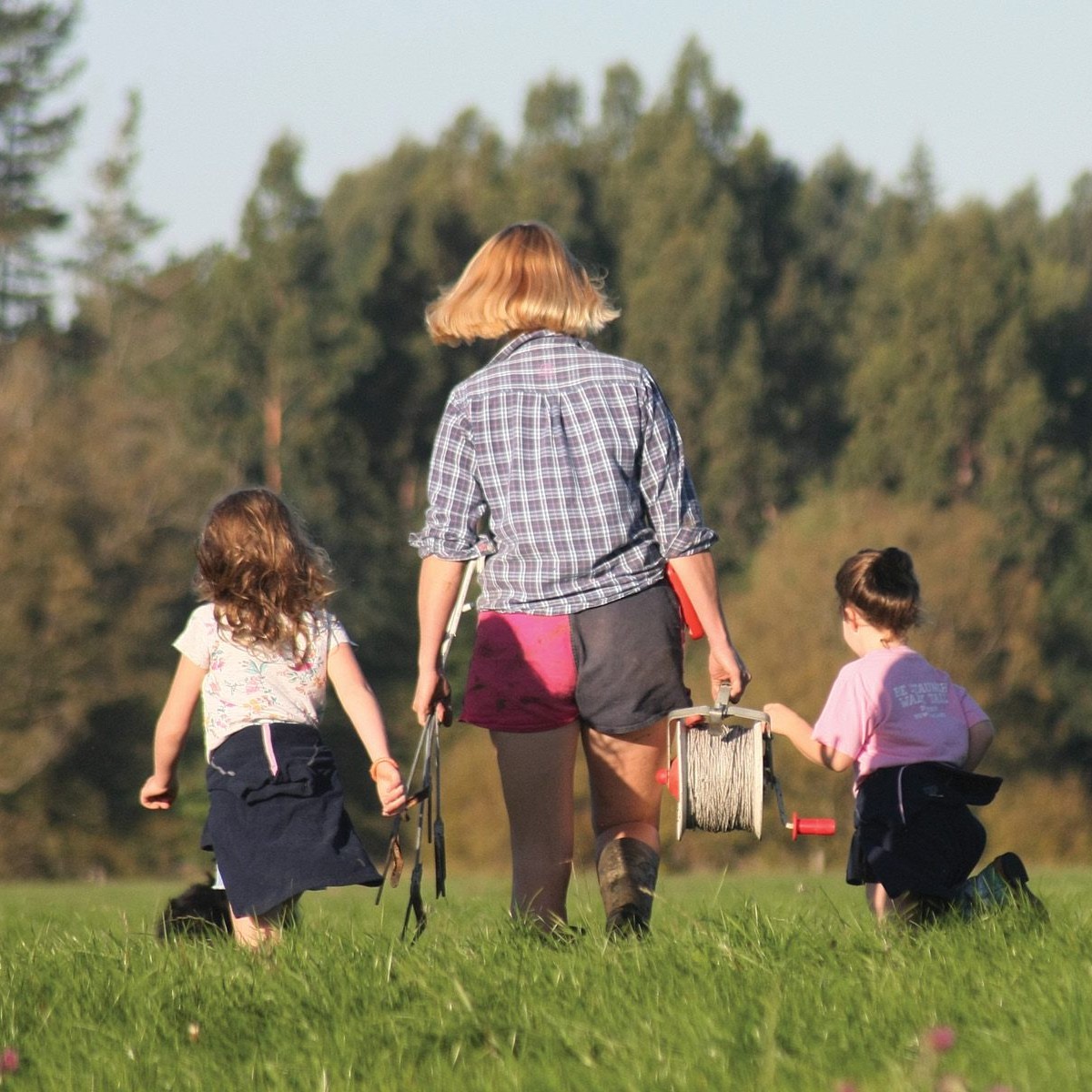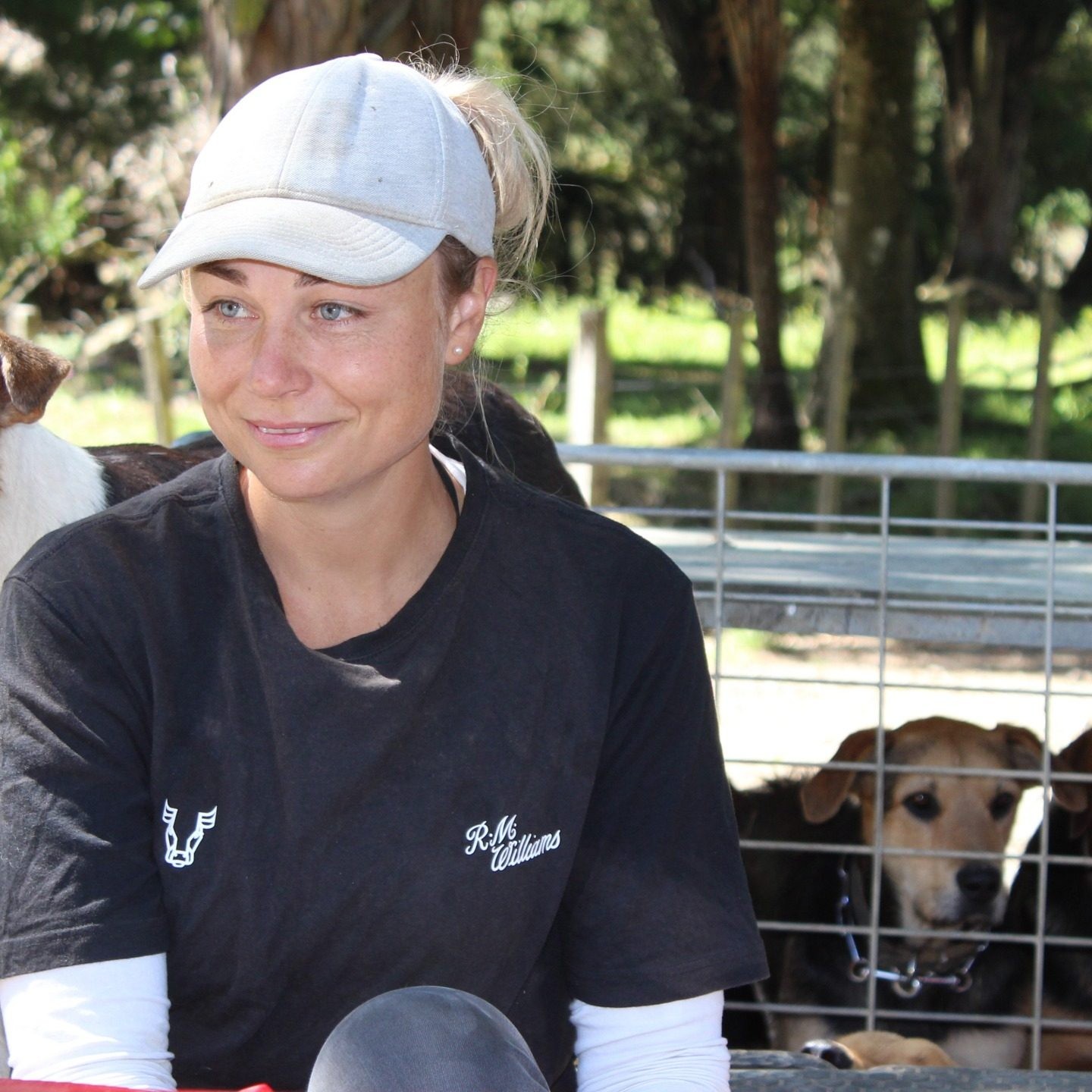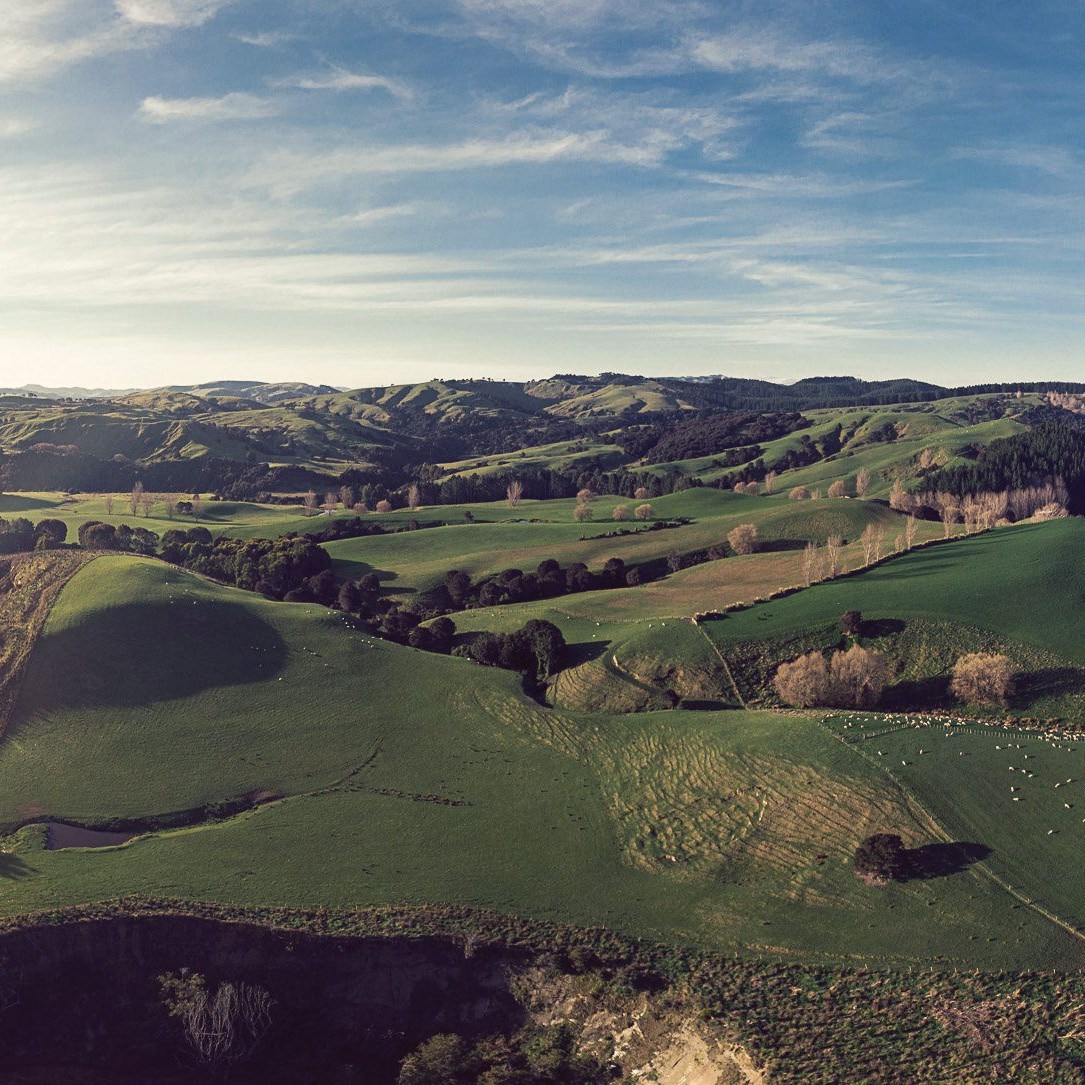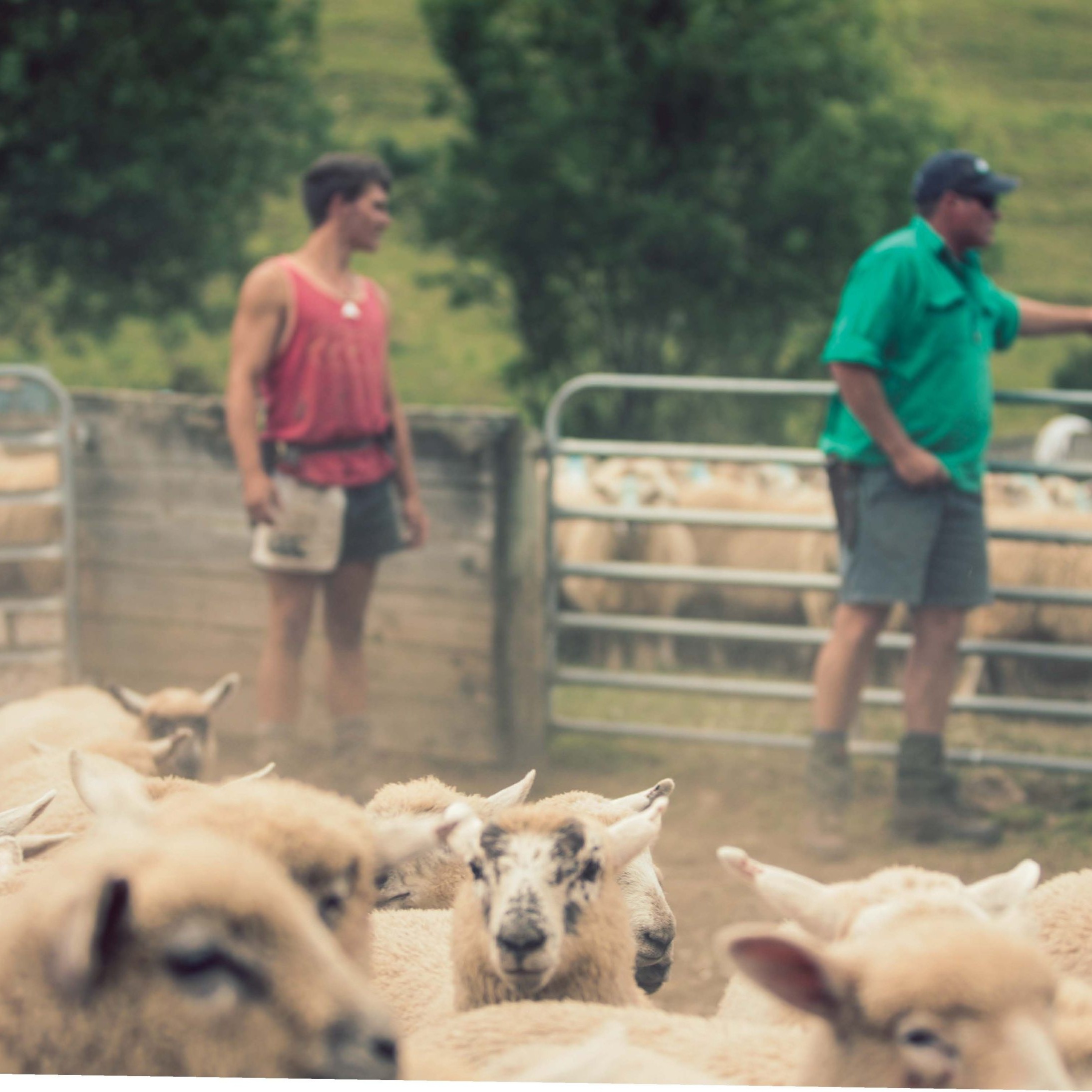Letting go of the reins can be hard for many farmers, but Mairi Whittle says her dad was happy to step back and take orders. By Russell Priest. Photos by Brad Hanson.
Taihape farmer Mairi Whittle has no regrets her dad, Jim threw her in at the deep end when she returned to the family farm, Makatote, 24km northeast of Taihape four years ago.
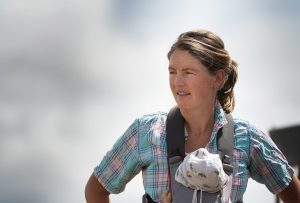
The 32-year-old Lincoln graduate and ex-rural banker has nothing but praise for her father, especially the way he managed the transition and the excellent state of the farm when she took over.
“Dad was happy to take orders but didn’t want the responsibility of running the farm any more,” Mairi says.
“You see so many instances of farmers who just can’t let the reins go – with the result that their successors lose their enthusiasm.”
Makatote has been in the Whittle family for four generations. Jim took over from his father in 1981 and met his Scottish wife Maggie when she came to work on the farm. Mairi grew up on Makatote with her two brothers. It is 607ha (570ha effective), with 37ha of ineffective country comprised of 10ha QEII Trust and the balance steep gullies associated with the Moawhango River.
One-third is easy contour, one-third medium-steep and the rest steep. Rising from 540 metres above sea level at the house to 820m at its highest point, the farm is particularly exposed to weather from the south-west which often brings snow. Unfortunately this higher country is some of the most productive on the farm.
With a B Ag Com, Mairi became a rural banker with the National Bank, working in the Nelson-Blenheim area then on to Taranaki.
Her OE took her to Scotland where she worked on a hunting estate and as a rousie before returning to New Zealand two years later via a remote Australian cattle station.
Prior to returning home, Mairi gained more practical farming experience working for local farmer Rob Stratton for nine months. Rob continues to offer Mairi support in her management with regular visits, for which she is grateful.
Mairi and partner Hayden Tapp have two children Tad (17 months) and Lachie (two months). Hayden (30) grew up on a farm at Mataroa, north-west of Taihape.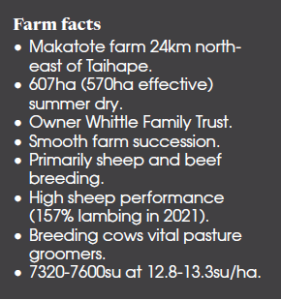
Mairi says juggling motherhood and running the farm has been challenging at times.
‘I thought I’d be able to be superwoman after having Tad and still run the farm but I soon realised how demanding children can be,” says Mairi.
Hayden gave up his shearing job to help on Makatote, as well as spending a couple of days a week on his 250ha hill country block at Mataroa, which he leases from his parents.
“We try to maintain a simple farming system to minimise labour requirements but could really do with an extra labour unit,” Mairi says.
Jim helps out on Makatote and Hayden’s parents help him out on his block.
The lease block is farmed extensively, running 1200 ewes and 90 breeding cows over steep country. Cull ewe lambs from Makatote form the basis of the ewe flock with all ewes going to terminal sires and progeny killed.
When Mairi returned to Makatote in 2018, she leased the farm from the Whittle Family Trust and bought 4000 of its ewes and 1800 hoggets. Buoyant livestock prices recently have enabled her to pay off a considerable amount of debt.
Jim had always run sheep and traded cattle but Mairi was keen to farm cows and use them as a management tool for maintaining pasture quality.
“There was a lot of thatch on the farm when I took over and the cows have done a marvellous job cleaning it up.”
Building the herd
Mairi has been prepared to sacrifice some production from her cow herd in aid of pasture management, and is full of admiration for the job they have done. Buying her first 60 cows while she was working for Rob Stratton, she now has a herd of 150.
She’s found it difficult to buy good capital stock but now that her first group of homebred R2 in-calf heifers are entering the herd she will cull some of the foundation animals.
“I’ll be more than happy to cull some of the MA cows ‘cos there are some real witches out there.”
For the first two years all weaners were sold and she wasn’t too concerned about the price achieved because the cows were doing a good job on pasture control. An abundance of Kestrel kale and balage the following year enabled the weaner steers to be wintered and sold on the spring market for $1290 (364kg).
Whether the steer calves are sold as weaners or wintered and sold as yearlings in the spring will depend on how much feed is available at the end of March. This will be determined by a feed budget.
“We also need to do our sums and determine how much it costs to winter them,” says Mairi.
“Being summer dry it’s a wise strategy to sell all trading stock before the summer sets in.”
All weaner heifers were wintered last year with the best 51 kept as replacements and put to a low birthweight EBV bull (Waiterenui-bred) on December 1 (for 21 days) at an average weight of 340kg.
They try to grow their heifers as fast as possible by putting them on saved grass after weaning. Then they enter a winter rotation with the ewe lambs before going on to swedes. The two-tooth ewes move onto kale.
Of the 33 bought-in heifers that calved last year, only two were dry and of this year’s 51 homebred heifers only nine were culled.
Heifers are calved with in-lamb hoggets on easier country on the eastern side of the farm and supplemented with balage. As they calve they are moved into adjacent hogget-lambing paddocks containing more feed.
Bull-out date for the MA cows is December 20 using a ratio of one bull to 45 cows. The KayJay Angus bulls are out for 54 days during which time Hayden keeps a close eye on them for any injuries.
Cows are made to work hard over the winter following the ewes in their winter rotation. Single-wire electric fences split up the paddocks to ensure the cows do a thorough job removing roughage. Supplemented with balage, the cows also clean up the kale stalks after the ewes have been taken off the winter crops.
At the end of September the cows are set stocked for calving on the steeper country among lambed ewes at 0.2-1/ha depending upon the feed availability. Once calved, they are moved between paddocks to even out pasture covers. The first calves arrive about October 1.
Green-feed crops are a vital source of feed for stock over the winter and their budgeted yield determines how long animals remain off pasture. A total of 20ha divided into two areas is sown a year. The cropping rotation involves spraying off 10ha of pasture a and direct drilling with Kestrel kale and swedes. The following year this area is roller-drilled with just Kestrel kale to avoid club root, then returned to pasture in the autumn.
MA ewes are fed on one of the paddocks and two-tooth ewes and weaner cattle the other. Both crops are split into blocks (4-5 days grazing) using three-wire electric fences. Cows are brought in to clean up the blocks after the ewes and weaner cattle have left.
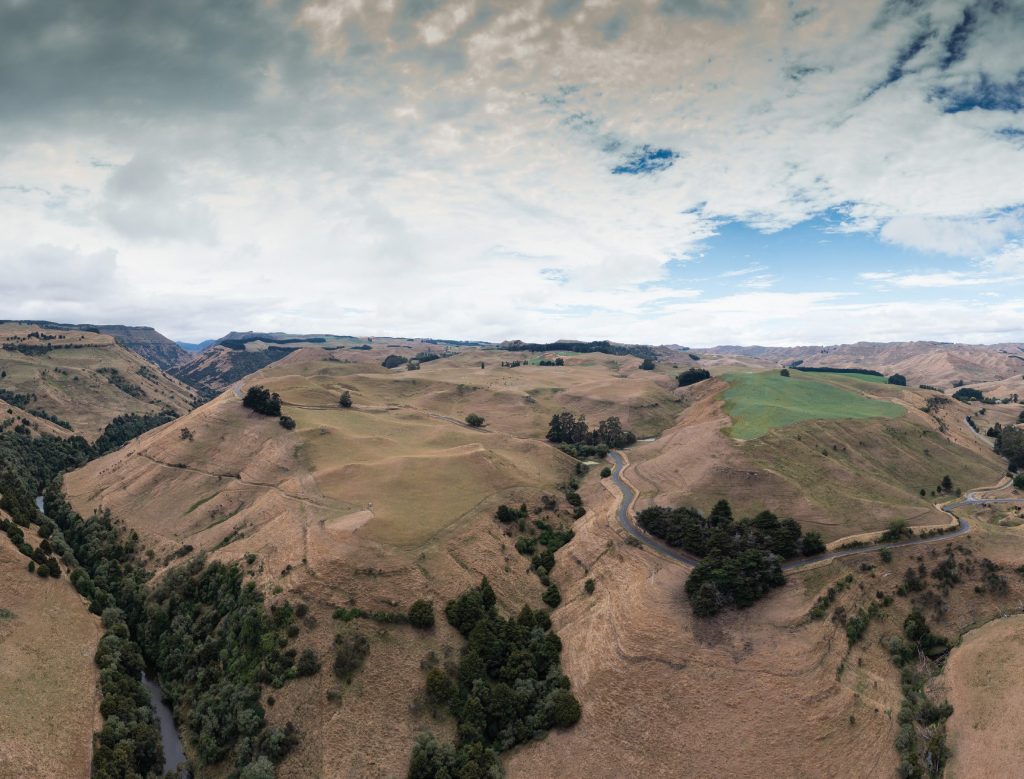
Cows are there to do a job
Once mobbed up for mating the cows are rotated with the weaned ewes to continue their role of controlling pasture growth. Calves are weaned towards the end of March at about 220kg or on a date that coincides with one of the weaner fairs. Mairi admits the average calf weaning weight is not great, but is the trade-off they’re willing to make when cows are needed for pasture grooming.
Calves are drenched at weaning, then six-to-eight weeks later and finally when they come off crop in the spring.
Mairi says their sheep-to-cattle ratio is still too high with ewes having to be set stocked for lambing at 8.5-9.5/ha, due to the shortage of lambing country. She thinks they need more cows to control later spring growth, particularly now they are lambing hoggets. Breeding ewe numbers may be reduced to accommodate.
They place a lot of emphasis on setting the farm up for lamb weaning, particularly on the easier country on the eastern side of the farm where the lambs seem to do best.
“You can’t afford to take your foot off the throttle because pastures can get away very quickly.”
Producing about 7000 lambs in a summer-dry environment makes Makatote primarily a store stock producing farm. Mairi admits that in such an unpredictable environment it’s prudent to sell most of their lambs on the store market and concentrate over the summer on growing their ewe hogget replacements and maintaining ewe condition in readiness for mating.
“We’ve got to be flexible and are happy not to mate our hoggets if they’re not up to weight, and wean our calves early if there is a shortage of feed.”
Carrying 3800 ewes, 1250 hoggets (900 in lamb), 150 cows and 140 R1 heifers and steers, 607ha (570ha effective) Makatote is stocked at about 13su/ha.
The high-performing Romney ewe flock is the engine room of the business and had been based on Turanganui bloodlines. In recent years Paki-iti rams have been used.
Buying from Paki-iti’s top price bracket ($1350-$1400), Romney rams are selected on soundness and type before the traits of early growth, survival, number of lambs born and mature weight are explored.
“Our ewes are big enough now and we don’t want them to get any bigger so we like to buy rams that have a mature weight breeding value below average,” Hayden says.
The ram-out date for the five-year ewes is March 25 (to Paki-iti Suftex rams), the main mob of ewes is April 5 (to Romney rams), and the ewe hoggets is May 5 (to Suftex rams). The mating period for the ewes is two cycles and the hoggets is 21 days.
Whenever possible the golden rule of flushing ewes 10 days before and 10 days after mating starts is adhered to.
The earlier lambing date for the five-year ewes enables them to be weaned earlier and capture early season premiums on both ewes and lambs.. It also reduces feed demand and helps cash flow.
Short rotation lengths
Ewes are mated in three groups (two-tooths, MA and five-year ewes) while being rotationally grazed. After mating, the three groups are amalgamated (only if the two-tooths are in good condition) and enter a 20-day winter rotation with no more than two days in each paddock.
“It’s a bit frustrating rotationally grazing because we’ve only got 30 paddocks, so rotation lengths are too short. Sub-divisional fencing is a high priority,” Mairi says.
All ewes go on to swedes and Kestrel kale crops immediately after scanning on July 1 for a month which allows pasture covers on lambing paddocks to increase in readiness for set stocking for lambing.
The average scanning percentage is 181 (only scan for dries, singles and twins) with last year’s lambing percentage hitting 157. Mairi says even after a dry summer their ewes still scan 178%.
“We vaccinated our two-tooths for campo and toxo last year for the first time and we appear to have got a significant response in lambing percentage,” Hayden says.
Scanning data is used as an indicator of potential lambing percentage so single and twin-bearing ewes can be set-stocked accordingly and twin ewe lambs can be identified as potential flock replacements. Only twin ewe lambs are eligible as flock replacements.
Hoggets must be above 42kg to go to the ram. Last year 1250 were eligible with 900 getting in lamb and producing 940 lambs. In-lamb hoggets get preferential treatment through to two-tooth mating and are rotationally wintered over the whole farm. Set stocked at 11/ha they are lambed on the easier country on the eastern side of the farm as are the two-tooth ewes. Dry hoggets are wintered on an area unsuitable for lambing and are mated as two-tooths.
After coming off crops on August 1 ewes are given a Bionic capsule and a 5-in-1 jab before being set stocked for lambing. Single-bearing ewes are lambed on steeper country at 9/ha.
No lambing beat
After set stocking and before lambing starts ewe numbers are manipulated between paddocks to even up pasture covers. Ewes are not subjected to a lambing beat.
The five-year ewes generally produce 160% of lambs and are weaned on December 1 and killed along with a third of their lambs. Lambs normally average over 17kg.
Mairi’s goal is to sell a third of all killable lambs at weaning either as stores or through the works which was achieved last year. This year only 15% of killable lambs were sold at 16.5kg ($150).
“We aggressively sell store lambs early because of the declining price. This year our lambs have averaged $124 (as at February 8),” Mairi says.
Most male and terminal female lambs are sold woolly with only the replacement ewe lambs (after weaning) and late store lambs being shorn.
MA ewes are shorn as soon as possible after weaning and again in late May.
The main mob of ewes is weaned a week before Christmas after which they go into summer rotation with the cows and calves. Whenever ewes go past the yards, particularly if they are going on to poorer country, the lighter ones are drafted off and preferentially fed.
Flystrike is ever present so all ewes and lambs are dipped with Cyrazin between lambing and weaning. The ewes are treated again with a lice dip (Cyrazin-ko) in early February.
Lambs get drenched when dipped with Cyrazin then again at weaning and thereafter monthly until the shortest day when they receive an exit drench (Zolvix). A Barbers Pole drench is also administered in mid-February.
Makatote’s soils are of sedimentary origin based on predominantly sandstone and mudstone with a mantle of volcanic ash on the easier country. Fertility levels are excellent with Olsen Ps 23-56, pH 5.9-6.4, sulphate sulphurs 8-17.
“Dad put on super and lime regularly so it’s not surprising the farm has excellent fertility levels,” Mairi says.
Fertiliser applied since Mairi has taken over includes 180kg/ha DAP in the autumn to generate winter pasture covers and 80kg/ha of N-Protect in the late winter on the easier country to improve lambing covers.
Mairi says future capital expenditure will concentrate on subdivision and a water reticulation system.
The farm has excellent sheep and cattle yards, covered yards and woolshed, two sets of satellite yards and a well-designed laneway system.
“Mum and Dad farmed Makatote by themselves so the infrastructure was designed to make workability easy.”

